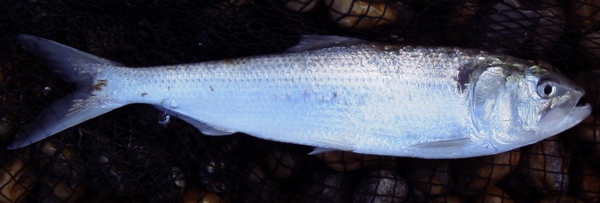
|
|
|
|
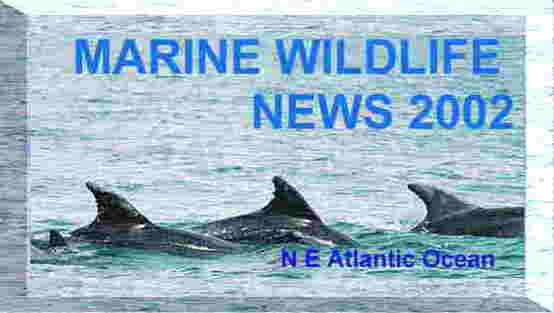 |
|
Norwegian Marine*** |
|
L-I-N-K-S to Other Sites (Click on Text) |
|
Smart Group |
|
|
|
|
|
|

Monthly Marine News Bulletin |
|
Marine Nature Conservation Review Survey Database |
|
|
 |
|
|
|
|
|
|
 .
.
Reports of marine wildlife from all around the British Isles, with pollution incidents and conservation initiatives as they affect the fauna and flora of the NE Atlantic Ocean.
on Microsoft Internet Explorer (best) or Netscape
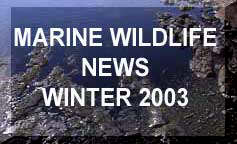 |
 |
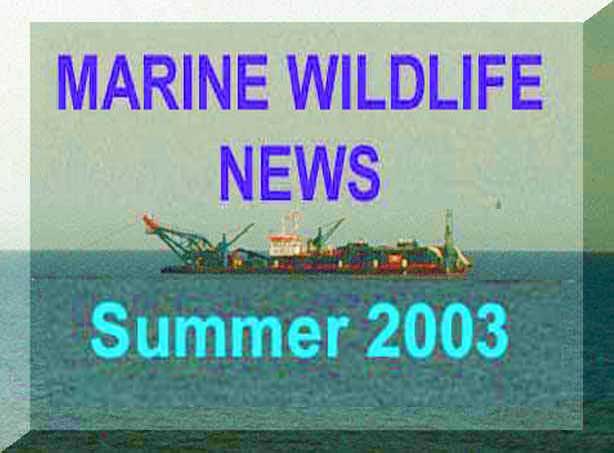 |
 |
LATEST NEWS
28 December 2003
A rorqual whale of over 30 tonnes is washed up dead on the sandy shore of the bay of Audierne, between Tronoën and the Torch, near Plomeur near Quimper, southern Brittany, France. Samples have been taken by Oceanopolis, Brest (Public Aquarium) who identified the species as a Fin Whale, Balaenoptera physalis, that had recently died and measured 19.5 metres in length.
Full Report
19 December 2003
A "superpod" of thousands of dolphins was spread over about two and a half miles off Nare Head, on the Roseland Peninsula, Cornwall. The species involved is the Common Dolphin, Delphinus delphis, of all age groups including calves and mothers. Other small cetacean species were possibly present. These superpods are a rare once in a lifetime event around the British coast, but very large pods have been seen off the Cornish coast in recent years, the previous one occurring at the beginning of the year. The superpod was accompanied by hundreds of sea birds including Guillemots and Gannets feeding on Mackerel.First News Report by Franck Dupraz et Océane Grège via UK Cetnet"Western Morning News" Report
Large Pods of Dolphins off Cornwall in January 2003 (1)
Large Pods of Dolphins off Cornwall in January 2003 (2)
BMLSS Cetacea18 December 2003
Two Humpback Whales, Megaptera novaengliae, were seen near The Hague (Den Haag), Zuid-Holland. They were discovered by the local department of the lifeboat association who prevented the whales from swimming towards the coast. At dusk they lost the animals near ´s-Gravenzande, some 10 kilometres south of The Hague. The animals were estimated to be 8 and 18 metres long. They were not seen by any of the local sea-migration watchers; the Humpbacks were identified by the pictures made by one of the members of the lifeboat. The identification was confirmed by Kees Camphuysen.
This is the first record of living Humpbacks for the Netherlands.
Full Report on UK CetnetReport by Vincent van der Spek via UK CetnetTwo large whales swam along the Dutch coast near Scheveningen. They were identified as Humpback Whales, Megaptera novaengliae, from the photographs.
Report (in Dutch) with links to PhotographsReport by Jan Wouter via UK CetnetPrevious Record (September 2003)
Tragically, on 20 December 2003, a pair of Humpback Whales, Megaptera novaengliae, a male and a young whale, were caught in a fishing net and died.Report by Jamie Duffie via UK CetnetCarcass Photographs
BMLSS Cetacea5 December 2003
A medium-sized Bluefin Tuna, Thunnus thynnus, was landed at Plymouth Fish Market. It was caught about 24 nautical miles east of Lizard Point, SW Cornwall in a mid-water pair trawl. Adult Bluefin Tuna are no longer caught regularly caught off England and the last one on record was caught in 1968.Report from Doug Herdson (National Marine Aquarium, Plymouth)Full Report
on the Marine Wildlife of the North-east Atlantic Ocean Group
BMLSS Tunnies4 December 2003
Walkers along the coast at Bovisand in Devon were treated to a rare sight as a five metre long whale was temporarily stranded close to the shore in Heybrook Bay. It has been identified as a Northern Bottle-nosed Whale, Hyperoodon ampullatus, after originally being identified as a Pilot Whale. The malnourished whale was spotted by a walker, Steve Blackhouse, who quickly rang the Coastguard. Bottlenose Whales are rarely seen in the English Channel, normally preferring in waters up to 1,000 metres deep, off the continental shelf.
"Western Morning News" Report
Marine Mammals of the UK Smart Group
British Marine Life Rescue Report
BMLSS Cetacea31 November 2003
A Cornish long-line fishermen has caught a total 115 Porbeagle Sharks, Lamna nasus, on two long-line fishery trips to their feeding grounds off Cornwall. The largest one weighed 60 kg (132 lb), but is unclear if this was the weight before on after it was gutted. It was two metres long, probably including the tail fin. These look like a pre breeding stock of Porbeagles with females that do not attain maturity until they are two metres in length. This mass capture has raised the ire of environmentalists as the large species of sharks and even some of smaller species like the Angel Shark, Squatina squatina, are vulnerable to excessive fishing. In the 1960s the Newfoundland fishery for Porbeagle was seriously overfished as ceased as a commercial activity. Hundreds of Porbeagle Sharks are caught off northern France each year.
BBC News Report
BMLSS Sharks8 October 2003
The ascidian Perophora japonica was collected from crab pot rope off the south coast of Guernsey by Clive Brown. Colonies of this sea squirt live on fucoid seaweeds, pontoons and other hard substrates. The small translucent zooids (approximately 4 mm long) are budded from stolons and generally rather closely packed. Young parts of colony are yellow or greenish-yellow.
This ascidian was first recorded in the British Isles in Plymouth Sound in 1999. It had been discovered on the French coast of Brittany a few years earlier. There has also been a further discovery in the Fleet Lagoon, Dorset (near Chesil Beach).
Report Message
Further Information (Marlin)Information and first ID by Richard Lord (Guernsey)
on the Marine Wildlife of the North-east Atlantic Ocean Group
29 September 2003
A large whale, initially identified as a Minke Whale, Balaenoptera acutorostrata, was reported floating 8 km west of Hoek van Holland. Subsequently, it was decided to tow the whale out of the way. However, after an analysis of several photographs by Kees Camphuysen, the whale was identified as a Humpback Whale, Megaptera novaengliae. This the first record of this species in The Netherlands!
Three ImagesReport by Jan Wouter on UK Cetnet
27 September 2003
An outlandish and completely unexpected addition to the Portland Island (Dorset) mammal list came today in the form of a Harp Seal, Pagophilus groenlandicus, that was found hauled out on rocks along the East Cliffs at the Bill during the afternoon; it remained there for three hours before being flushed off by the incoming tide.
Photograph
The Harp Seal is an Arctic species that is hunted (cf. culled) in the frozen north of Canada.Report by Martin Cade via John Young via UK CetnetReport on Portland Wildlife News
ORCA (Organsation Cetacea) Report with previous sightings
BMLSS Seals14 September 2003
Off Worthing (West Sussex), on a shallow water dive site known as the Worthing Lumps, a small school of Rock Cooks (Small-mouth Wrasse), Centrolabrus exoletus, were seen shyly swimming by the rock face, quite unlike the bolder Corkwing, Symphodus melops (=Crenilabrus), and Goldsinny Wrasse, Centrolabrus rupestris.Rock Cooks (Small-mouth Wrasse), Centrolabrus exoletus
Photograph by Paul ParsonsThese inconspicuous wrasse have not been recorded off the Sussex coast before and the books state that is fish is only known from the southern and western coasts of Britain. They may have been overlooked, but they are certainly not a common occurrence. There have been no records of juvenile fish in Sussex rock pools, where the Corkwing first year fish are very common and Ballan Wrasse, Labrus bergylta, juveniles occasionally discovered.
Report by Paul Parsons (Sompting)BMLSS Wrasse3 September 2003
A large whale skull was landed at Shoreham (Monteum's Wharf, River Adur) from a small (under 10 metres length) trawler fishing three miles off Brighton Marina, Sussex.Further Details and Photographs The whale skull was eventually identified as that of the Fin Whale, Balaenoptera physalis.
Report by Dr Gerald Legg (Booth Museum)BMLSS Cetacea30-31 August 2003
National Whale and Dolphin Watch
Sea Watch FoundationThe Sea Watch Foundation organised the UK's National Whale and Dolphin Watch Weekend, aimed at providing a snapshot picture of the numbers and variety of whales, dolphins and porpoises to be seen around the British Isles.
Details27 August 2003
Two Melon-headed Whales, Peponocephala electra, became stranded alive near La Rochelle, western France (Charente-Maritime département, Poitou-Charentes région) in the central coastal area of the Bay of Biscay (latitude 46°). Both stranded whales were helped back to sea, but one of them was discovered washed up dead on a nearby beach on 29 August 2003. When the live beached whales were discovered, neither was outwardly seen to be ill or injured.
This is the first record of this whale seen alive in European seas as this is a tropical species that usually lives and hunts in large schools in the open oceans.
The dead specimen was an adult male that measured 2.43 metres long and weighed 123 kg (the other whale measured approximately the same length). This is nearly its full size and although they are called whales they are actually 30% smaller than Bottle-nosed Dolphins, Tursiops truncatus.Report from Olivier Van Canneyt, of the Centre de Recherche sur les Mammifères Marins (based in La Rochelle), via ORCA, via UK CetnetFull Report and Photographs25 August 2003
Crab potter Micky Guille captured an orange European Lobster, Homarus gammarus, in 60 metres of water about ten miles south-west of Pleinmont, south coast of Guernsey.The unusual lobster was kept alive in his vivier, until put on public display in the Guernsey Public Aquarium on 10 September 2003.
Report from Richard Lord (Guernsey)Abnormal Lobsters (BMLSS)20 August 2003
Emergency protection was introduced for the Darwin Mounds, a deep water cold water coral reef off the north west of Scotland near Rockall. The main coral species forming the rare and interesting habitat is Lophelia pertusa but Madrepora oculata is also known to be present. The protection forbids all fishing and oil exploration in the area because of the damage such activities would cause.
JNCC Report Page
JNCC Committee Paper
Extending Offshore Habitats ProtectionInformation from the Joint Nature Conservation Committee (JNCC)
c 20 August 2003
Two specimens of the square-carapaced crab, Hemigrapsus penicillatus were caught on the Belgian shore at Koksijde. This Japanese immigrant which has been known from France (1994) and The Netherlands (2000), is a new arrival for the Belgian carcinofauna.Report by Hans Hillewaert and Francis KerckhofAbout the same date, some more specimens were discovered on the Belgian coast by Emmanuël Dumoulin.
(Biological Monitoring, Sea Fisheries Department, Belgium)
via the CRUST-L (Custacean Discussion Group)
More Information on this crab
Images
Marine Science Portal14 August 2003
BMLSS Black-faced Blenny page
A Black-faced Blenny, Tripterygion delaisi, was discovered in a rockpool at Les Écréhous, Jersey. This warm water fish fish is more likely to be found in the shallow seas to the south of the English Channel. It is a small secretive fish and although not a true blenny, it hides in crannies and will rarely feature in fishermen or angler's catches. However, diver's are beginning to see more of this attractive fish and they have been reported notably from off the coast of Dorset. This is my first record of this fish discovered on the shore. It was about 55 mm in length.
Rhizostoma octopus off Chesil Beach
Photograph by Peter Glanvill (Dorset)6 August 2003
Doing a few boat transects today we saw absolutely loads of the jellyfish, Rhizostoma octopus off the Rhossilhi/Llangennith beach, Gower, south Wales and further into Carmarthen Bay. I'm not even going to attempt a number, but unless they were all stretched out in lines which corresponded exactly with our transects there must have been tens of thousands.Report by Adam CooperBMLSS Jellyfish
DEFRA LAUNCHES CONSULTATION ON
EXTENDING HABITAT AND BIRDS DIRECTIVEA Government consultation is to look at increasing protection for important offshore sites such as the Darwin Mounds, Nature Conservation Minister Ben Bradshaw announced.
The 12 week consultation puts forward proposals to extend the protection afforded to important species and habitats under the Birds and Habitats Directives, which currently does not go beyond 12 nautical miles of the UK coastline.
[extract]
Full Press Release
2 August 2003
An ovigerous (with eggs) female Slipper Lobster, Scyllarus arctus, was caught just off the Eddystone Lighthouse, south Cornwall, by Looe-based fishermen Richard Chapman. This strange crustacean is only a rare discovery in British seas, normally found in waters to the south. However, it is now suspected there could be a small breeding population off the coast of Cornwall. It measured 14 cm long and was identified by the experts at MarLIN (Marine Life Information Network).
The exact date of capture was probably a few days before this newspaper report in the Western Morning News.
2001 Report5 July 2003
Whilst angling off Rotunda Beach at the base of Folkestone Pier, Kent, I caught the following fish which I think is an Twaite Shad, Alosa fallax. It was 38 cm (15 ") long and weighed 624 grams (1lb 6oz). (However, it is possible that this species is the Allis Shad, Alosa alosa, as the only reliable method of differentiating the two species is by counting the gill rakers.)The spots along the side of the body present in the Twaite Shad were absent, but these spots are often missing. (Andy Horton)Report by Phil Whiting (UK Aquarium)From the scale pattern on the fish I am pretty sure that it is a Twaite Shad and a spent one at that. (Miran Aprahamian)
Further Information15 June 2003
Whilst netting the River Hayle, Cornwall, at low water for sandeel bait, the first sweep brought a mixed bag of Greater Sandeels, Hyperoplus lanceolatus, and Lesser Sandeels, Ammodytes tobianus, plus quite a few Lesser Weevers, Echiichthys vipera. The unusual aspect was the large number of lice on the sandeel and free swimming in the bunt. Whilst ejecting the Weevers we noticed one fish had two lice stuck inside its mouth. My mate caught a louse and promptly let it go as it bit him. They were about 8 mm long. At this size they are only half the size of the adults.These are isopods (wood-lice) and expert Tammy Horton has confirmed that they are the parasitic species Ceratothoa steindachneri.
Report by Treve Opie originally on the Cornish Mailing ListLink to Thumbnail Images13 June 2003
News Report
A massive bloom of plankton has turned the seas around the Shetland Isles a turquoise colour, stretching at least 60 miles, almost the whole length of the islands, from Yell the second most northern island to Sumburgh Head the southernmost tip. The organism was the coccolithophore Emiliania huxleyi which is responsible for vast blooms covering up to 40 thousand square miles of the oceans and can be seen from a space shuttle. Blooms this large can change the climate. This plankton bloom is non-toxic not thought to pose a threat to the salmon farms on the Shetlands.
Reference Book (see Chapter 6)
1999 Report of a bloom off Cornwall
10-12 June 2003
Large numbers of pelagic scyphozoan Pelagia noctiluca, the Mauve Stinger (small jellyfish), were spotted all along the east coast of Lundy, Bristol Channel. I was participating in an English Nature drop-down video survey and I found dense shoals of this beautiful pelagic jellyfish. The density was probably in the region of 15 to 20 individuals per square metre at the surface.
NB: Swarms of this jellyfish are unusual in British seas.Report by Ian Reach (Maritime Protected Areas Officer, English Nature)Pelagia Stings
on the Marine Wildlife of the North-east Atlantic Ocean Group
BMLSS Jellyfish page 26 June 2003
Millions (literally) of By-the-Wind Sailors, Velella velella, (a jellyfish-like animal) are being washed up alive to perish on the shores of Cornwall, now reaching up the English Channel as far east as Polperro and Looe. All are very small, around 15 mm in length, and still have fleshy body parts attached.Report by Jon Makeham on the Cornish Mailing ListMore Cornish Reports4 June 2003
I was on Charmouth beach in Dorset doing a little fossil hunting and suddenly found myself lying (best way to find tiny crinoids etc) in a wreck of tiny jellyfish. They had a bizarre transparent float and were a vivid blue being only around 25 to 30 mm long. These are By-the-Wind Sailors, Velella velella.Report by Dave WaltersVelella page
Velella Notes
MARLin Velella Web Page3 June 2003
The famous Boar Fish, Capros aper, died after its aquarium sprung a leak in the middle of the night. (It was caught from the Sussex shore at Hove in November 2002).
Vital Statistics
Fishbase Morphology31 May 2003
Shoreham bathed in a heatwave up to 24° C for the opening of the Adur Festival and Adur World Oceans Day 2003 on Coronation Green, Shoreham-by-Sea. About 3000 people attended the event that was steady and busy throughout.
Adur World Oceans Day 2003
10:00 am - 4:00 pm
Popular Information File on Adur World Oceans Day 2003
Acrobat Information File on Adur World Oceans Day 2003
Adur World Oceans Day 2003 Images (by Ray Hamblett)from 20 May 2003
Hundreds of By-the-Wind Sailors, Velella velella, (a jellyfish-like animal) are washed up on Cornish beaches.Reports on the Cornish Mailing List
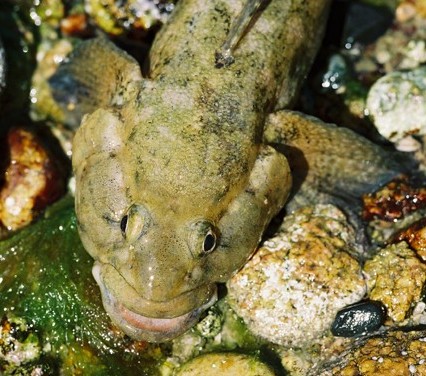 19
April 2003
19
April 2003
The discovery of a Giant Goby, Gobius cobitis, found in a rockpool above the half tide mark at Les Écréhous, Jersey, was a notable discovery. This goby is a protected species under the Wildlife and Countryside Act Schedule 5. It has always been known from the shores of Jersey but it is virtually unknown on the northern English Channel coasts with occasional records from Cornwall only. As it name indicates this goby is a 'giant' amongst the Gobiidae, a family of small fishes. The Giant Goby attains lengths of up to 25 cm.
BMLSS Gobies
 The
Strawberry
Beadlet Anemone,
Actinia fragacea,
has been observed discharging eggs in an aquarium. This method of reproduction
has been suspected but there have been no observations in print before.
The
Strawberry
Beadlet Anemone,
Actinia fragacea,
has been observed discharging eggs in an aquarium. This method of reproduction
has been suspected but there have been no observations in print before.
Full Report Link
5 April
2003
The
third Sperm
Whale, Physeter macrocephalus,
of the year is washed up dead on the Norfolk coast. This time a 15 metre
long whale became stranded on an isolated sandbank on Stiffkey Marshes,
on the north coast of Norfolk.
BMLSS Cetacea
Sperm Whale (First Report 2003)
c.
20 February 2003
Angler
Val
Fletcher struggled for 40 minutes to reel
a unique shore capture of the deep oceanic fish known as the Oarfish,
or Ribbon Fish, Regalecus glesne, off
the north-east coast of England at Skinningrove, Cleveland. This rare fish
caught on a squid bait came as a bit of a shock, even scary, as first the
head and then the whole length of its 3.3 metres emerged from the sea.
This elongate silvery fish, with red fins weighed in at 63.5 kg, which
actually meant it was rather a small one for arguably the largest, certainly
the longest bony fish in the mostly deep oceans (found down to 1000 metres)
attaining a normal length of 7 metres and a maximum of over 11 metres,
and a maximum weight of 272 kg.
So
unusual was this discovery that it ranks as perhaps the most unusual of
all records on these news pages.
Link
to Photograph
An
alternative story is that the Oarfish became trapped in a net and was brought
ashore dead. This seems a more likely occurrence.
I
have serious doubts about the authenticity of this record and it is thought
that it could only be a Dealfish
(Ribbonfish
family),
Trachipterus
arcticus.
Original
Report and Discussion (Link)
Times
Report
Fishbase
Entry
16
February 2003
A
117 cm pup long of a Bluntnose Sixgill
Shark, Hexanchus griseus, was landed
at Mevagissey, south Cornwall. The shark weighed 6.3 kg before gutting.
The Bluntnose Sixgill Shark
is principally a deep water species, usually found offshore and near the
bottom at depths of up to 1,800 metres. Young specimens can however
occasionally be found inshore in cold water at depths as shallow as 25
- 50 metres, especially near rocky coasts or islands where deep water occurs
close by.
Sixgill
Shark pups measure 65 cm - 70 cm at birth
and can grow up to at least 4.8 metres (over 15 ft) long. This grey coloured
sharks is unusual in that compared with most species of shark, they have
an extra pair of gills. Females are thought to have 22 - 108 pups per litter.
Full
Report
on the Marine Wildlife of the North-east Atlantic Ocean Group
One adult and one juvenile Humpback Whale, Megaptera novaengliae, are seen 100 metres off Cove, near Aberdeen, north east Scotland. They swam slowly north past Girdleness breaching about one mile offshore in Aberdeen Bay. This large whale is regularly seen around the Shetland Isles but rarely ventures further south.
From around 3:00 pm to 4.30 pm, I witnessed a very large pod of dolphins swimming eastwards up the English Channel past Polperro, Cornwall. It was impossible, even through my telescope, to firmly identify the species, but there were a mix of (probably) Common Dolphins, Delphinus delphis, and Porpoises, Phocoena phocoena. They were leaping from the water from about a half mile from the coast to the horizon, and spread over the four miles or so that I can see from my window. Numbers must have been well over a thousand. A fantastic sight to witness, and one I have not seen before in my nine years in Polperro.
BMLSS Cetacea
29
January 2003
The
level of oil pollution on Belgium's west coast worsened as more and bigger
oil slicks from the sunken vessel Tricolor
washed ashore and strong winds hampered clean-up operations. A spokeswoman
with a Belgian North Sea ecosystem management institute, BMM, said the
situation at Zeebrugge and Blankenberge had worsened since yesterday and
oil slicks several square metres in size were being washed ashore. The
Knokke-Heist Council also reported that oil clumps had polluted the beach
at Heist, but it was not yet certain whether the oil had infiltrated the
De Baai Nature Reserve. Oil has also washed ashore at Bredene, but the
town's Mayor, Willy Vanhooren, said the situation was not yet an environmental
disaster.
Oiled Birds on Belgian beaches
28
January 2003
Thousands
of By-the-Wind Sailor,
Velella
velella, are discovered washed up, alive or very freshly dead,
on Perranporth Beach, Cornwall, together with the Violet
Snail, Janthina janthina, (two
shells) that preys on Velella. This gastropod
is rarely recorded in British seas even when there are large numbers of
Velella
stranded. It is always worth looking for this attractive and fragile shell.
Exceptionally,
between 100 and 200 of the small jellyfish called Pelagia
noctiluca, the Mauve Stinger or
'Nightlight' jellyfish were also discovered.
These swarms seems to occur about every five or ten years, and is easily
recognised by the pustules that cover the small (rarely more that 75 mm
across) dome or umbrella.
The
cuttlebones
of all three species of large
British cuttlefish, Sepia,
and
a
Spirula
(a tiny mesopelagic cephalopod) shell were also found in the squally conditions
on the shore.
Rory
Goodall has also found large numbers of Velella,
on Porthmeor Beach, St Ives, Cornwall.
BMLSS Cuttlefish
BMLSS Molluscs
24
January 2003
A
14 metre long male Sperm
Whale, Physeter macrocephalus,
beached at the mouth of the River Ouse, near Kings Lynn, Norfolk, and died
as a result of the stranding. The dead whale was present on Brest Sands
in the Wash the following day when Rob
Deaville from the Natural History Museum performed a post-mortem. The
ultimate cause of the live stranding could not be determined but the animal
appeared to be reasonably aged (very worn teeth) so this may have played
a factor. This large whale is rarely stranded on English North Sea coasts,
with the first of the 20th century in 1986 and four records thereafter.
Sperm Whale (southern North Sea, stranded dead) 2000
A four metre long Minke Whale, Balaenoptera acutorostrata, is washed up dead on Shanklin beach on the east coast of the Isle of Wight. This could be the same whale that was spotted briefly stranded in Portland Harbour.
Over a period of five days, at least 2,000 oiled birds have washed ashore on Belgian beaches, especially between De Panne and Ostend and more are coming in.
The majority of the birds are Guillemots, but more than 100 Razorbills were also washed ashore.
BMLSS Sea Birds
Oiled Birds
13 January 2003
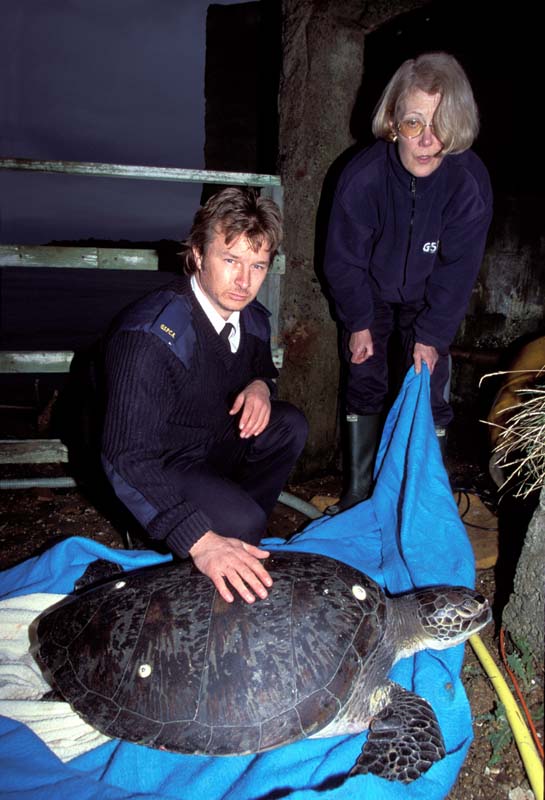 A
live Green Turtle,Chelonia
mydas, was stranded on the west coast
of Guernsey (Channel Islands) in the afternoon. Elliot
Green, was playing
football with his young son, discovered the
turtle on Saline Beach and reported it to the Guernsey Society for the
Protection of Cruelty to Animals (GSPCA).
Geoff George and Yvonne Chauvel (in the photograph) collected
the turtle, and after it had been treated by veterinarian John
Knight, transferred it to the Guernsey
Aquarium at St. Peter Port until arrangements can be made to release
it into the sea at a suitable location (preferably warm water). The
curved carapace length of the turtle is 75 cm and the curved carapace width
is 68 cm. This turtle inhabits tropical seas including the Atlantic coast
of Spain and the Mediterranean Sea. This turtle is only very rarely recorded
in British seas.
A
live Green Turtle,Chelonia
mydas, was stranded on the west coast
of Guernsey (Channel Islands) in the afternoon. Elliot
Green, was playing
football with his young son, discovered the
turtle on Saline Beach and reported it to the Guernsey Society for the
Protection of Cruelty to Animals (GSPCA).
Geoff George and Yvonne Chauvel (in the photograph) collected
the turtle, and after it had been treated by veterinarian John
Knight, transferred it to the Guernsey
Aquarium at St. Peter Port until arrangements can be made to release
it into the sea at a suitable location (preferably warm water). The
curved carapace length of the turtle is 75 cm and the curved carapace width
is 68 cm. This turtle inhabits tropical seas including the Atlantic coast
of Spain and the Mediterranean Sea. This turtle is only very rarely recorded
in British seas.
Green Turtle Information Page
BMLSS Turtles
9 January
2003
Already
32 dead
cetaceans, have been washed up on the
shores of south Cornwall this year, so that the recorders and helpers including
David
Ball of the Silver
Dolphin Conservation and Diving Centre at Porthleven, Cornwall can
hardly keep track of the 'tide' of carcasses. The dolphins have been in
the sea for long enough for them to start to decompose. They are all tagged
with with cable ties around the tail, so that if they wash out and re-beach,
they can be identified. At least some of them have probably been caught
in fishing nets.
By
18
January 2003 the number had risen to 55. Most
have been Common Dolphins (Delphinus
delphis), one was a Striped Dolphin (Stenella
coeruleoalba), Harbour Porpoises,
(Phocoena phocoena), number about 10, and several carcasses were
too decayed to be identified.
By
30 January 2003,
the number had increased to 77.
BMLSS Cetacea
4
January 2003
Fishermen aboard
the Polperro (south Cornwall) bottom trawler "Girl Jane" reported an extraordinary
dolphin sighting whilst fishing some 13 miles west of Plymouth, and about
two miles offshore, they encountered a pod
of leaping dolphins estimated to be "many
hundreds", perhaps a thousand. The species was not identified. At the same
time they received a call on the radio from a sister ship fishing 10 miles
east off Rame Head that they were surrounded by at least two hundred dolphins
(obviously a different pod).
On 17
January 2003 Polperro trawler "Girl Jane"
(again) reported another huge pod of dolphins
and porpoises, whilst shooting nets some
20 miles off Rame Head. Trawler "Cazadora", three miles or so away at the
time also recorded dolphins. In both cases the number reported was "hundreds".
Also, the Plymouth mackerel boats off Eddystone reef stopped fishing as
they were catching dolphins rather than fish.
1
January 2003
My
dog discovered a 25 cm (10 in) long Triggerfish,
Balistes
capriscus, are washed up dead on the beach between Seascale and
Sellafield (Cumbria). I recognised the body shape and the shell crunching
type of teeth in the book.
BMLSS Triggerfish
27 December 2002
A Minke
Whale, Balaenoptera acutorostrata,
is
spotted just before midday stranded on some rocks in Portland Harbour,
Dorset. The coastguards were called and they managed to push the whale
back into the water and it spent the rest of the day swimming around the
large natural harbour, but it has yet to be coaxed back out to the open
sea. This species of whale is rarely seen in the shallower parts
of the English Channel.
BBC
News Report
Corrected
Report by Clive Martin (Biscay Dolphin Research Programme)
BMLSS
Cetacea
12 December 2002
Early in the
morning a young 8 metre long Humpback
Whale, Megaptera
novaengliae, entered the naval harbour of
Frederikshavn on the northern Kattegat coast of Denmark. It remained in
the harbour for the whole of the day and is believed to be feeding on the
shoals of small fish seen. This large whale is regularly seen around the
Shetland
Isles but rarely ventures further south.
Video Footage
Cornish Humpback
BMLSS Cetacea News
5 December 2002
In the last
few weeks 640 oiled sea birds have
been washed up on the East Anglian coasts of Suffolk and Norfolk. The source
of the oil has not been discovered, but it is believed to have been released
from an old wreck.
BBC
Television News Report
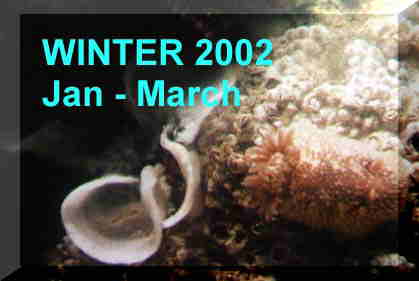 |
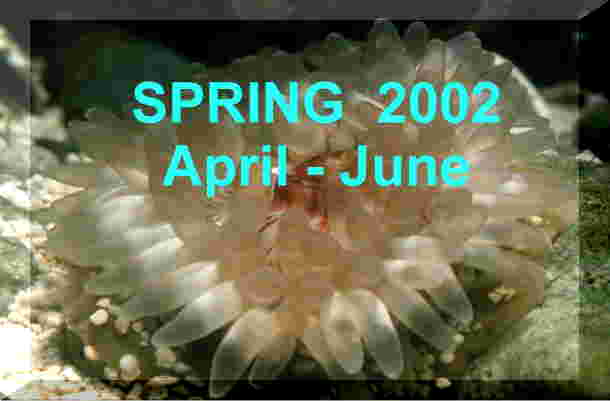 |
 |
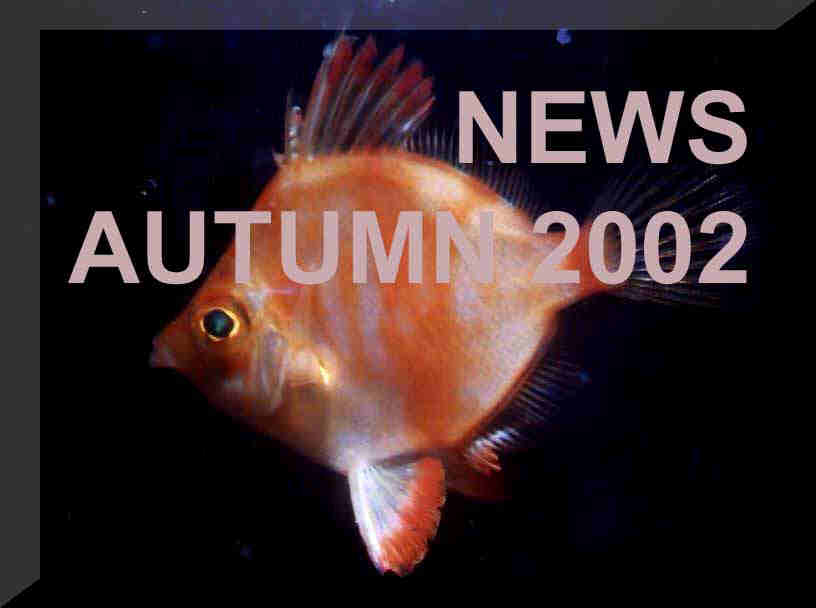 |
FOR EARLIER REPORTS CLICK ON THE BUTTON BELOW

The Marine Wildlife of the NE Atlantic Forum commences.
PLEASE JOIN

MARINE WILDLIFE of the NE ATLANTIC EFORUM PAGE (LINK TO)
News 2002
News 2001
News 2000
News 1999
|
Use these links if your are familiar with the scientific classifications of marine life |
The BMLSS (England) site commenced on 1 January 1997.
|
|
 |
 |
Andy Horton, Webmaster
|
|
|
|
|
|
Membership Form |
News 2001 News 2000 |



